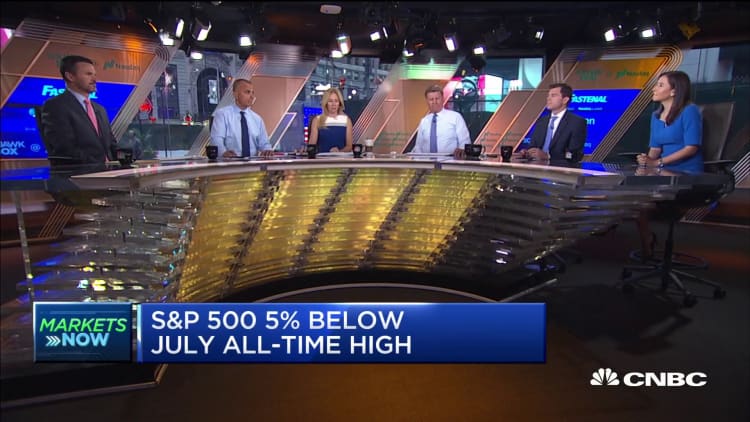
Despite all the attention paid to the deepening yield curve inversion, it "isn't just a switch" that turns on and causes a recession, according to Wall Street number cruncher Paul Hickey. In this case, it might not precede one at all.
The co-founder of Bespoke Investment Group said Wednesday on CNBC's "Squawk Box" that investors must also pay attention to other factors, such as strong consumer lending and "near generational lows" in claims for unemployment insurance. "We have to watch as close to real-time indicators of the economy as we can," he added.
Hickey also pointed out that low interest rates, which could go even lower if the Federal Reserve cuts borrowing costs next month, are stimulative for both businesses and consumers. The market expects the Fed to reduce rates for the second time this year at its September policy meeting.
Indeed, investors have to remember the yield curve is only one piece of a larger economic puzzle, said Gabriela Santos, global market strategist at J.P. Morgan Funds, appearing alongside Hickey. "What we see really is there are pockets of strength and clear pockets of weakness as well," she added.
The yield curve inversion worsened Wednesday morning as the 10-year Treasury yield dropped further below the 2-year yield, the biggest spread since 2007. An inverted yield curve has happened before every U.S. recession in the last 50 years, though it sometimes takes up to two years before the economic slowdown arrives. The yield inversions recently come as investors flock to bonds on concerns about a global economic slowdown being exacerbated by the U.S.-China trade war.
Meanwhile, the rate on the benchmark 30-year Treasury bond sank to a new all-time low Wednesday, dropping to a low just below 1.91%.
Santos and Hickey agreed that the falling bond yields, the inverted yield curve and broader uncertainty around global growth have created a difficult terrain for investors to navigate.
"You have to weigh the pros and cons as we always try to do," Hickey added. "But the pros are still outweighing the cons by a little bit."
Santos said she sees somewhat of a bright spot in earnings. "For earnings for next year, we're still expecting 3% to 5% positive earnings growth."


